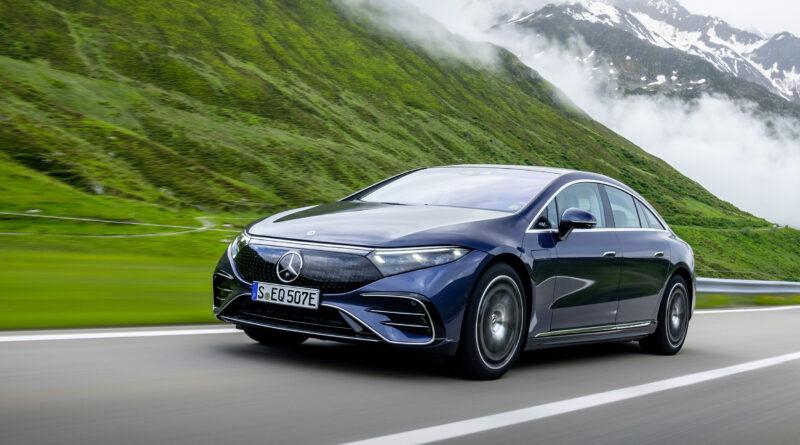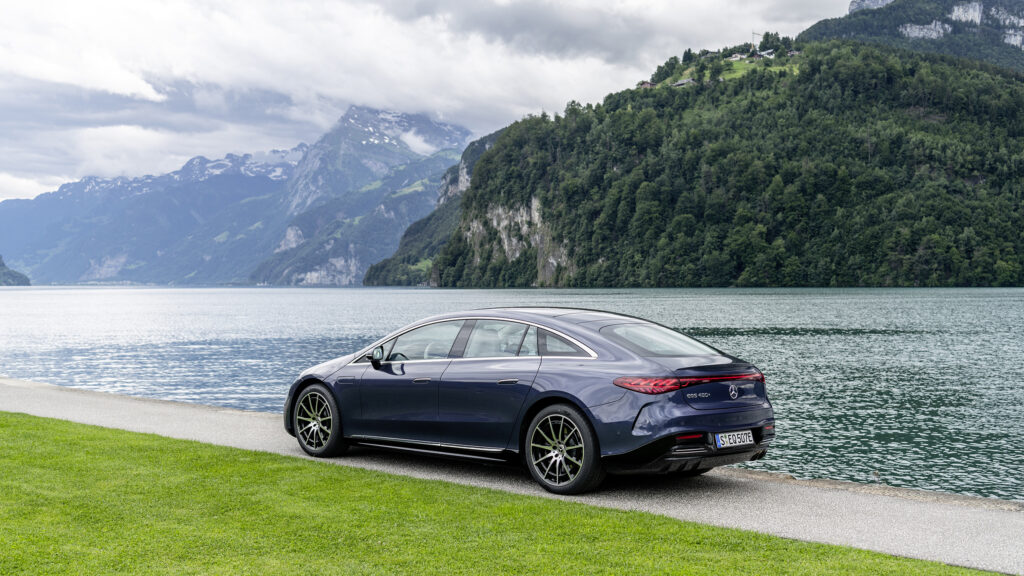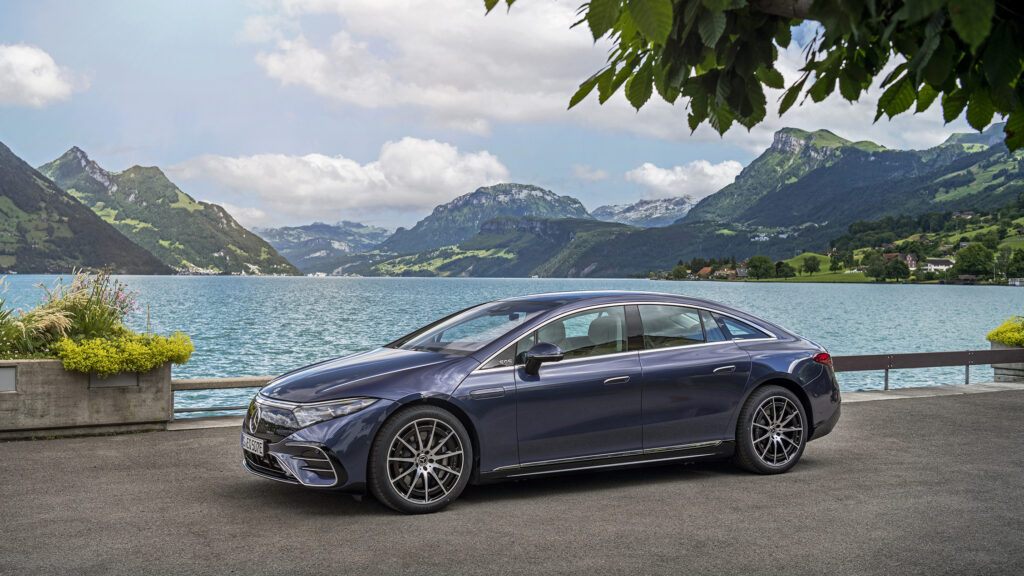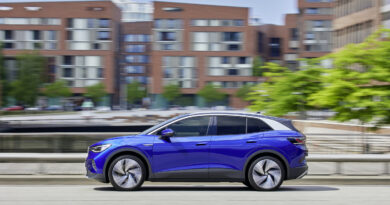Driven: Mercedes-EQ EQS450+
The EQS is much more than an EV rival for the S-Class, it’s a foretaste of the all-electric future of the world’s oldest car maker.
Just days after we drove this ultra-aero luxury liftback at its international press presentation in Switzerland, Mercedes-Benz CEO Ola Källenius made a surprise announcement.
From 2025 all the new vehicle platforms it introduces will be be EV-only, the Swedish-born exec said. By the end of this decade he expects Mercedes-Benz to be an all-electric car maker (read about it here).
READ MORE: Mercedes-AMG’s EV strategy revealed: from axial flux motors AMG 63 pace
READ MORE: Mercedes-Benz says EVs heading towards big profits by 2030
This means the end of the line for the S-Class – the PHEV version of which we drove recently as the S580e – along with all the company’s other ICE-powered model lines. Goodbye A-Class, C-Class and E-Class. Farewell GLC and GLE.
So, instead of being an EV alternative to the recently launched latest generation S-Class, the EQS is destined to replace it sometime before 2030.
Designed electric
The EQS isn’t like any of the EVs seen so far from the Mercedes-EQ sub-brand. The familiar EQC and EQA, and others like the EQB and EQV, were not born to be electric. They’re all based on adapted vehicle platforms designed first and foremost for ICE power.
The EQS, in contrast, is built on MEA. Those letters stand for Modular Electric Architecture. This is a purpose-designed, no-compromise EV platform. It will serve as the basis for at least three more EVs known to be in the pipeline as Mercedes-Benz looks to expand its electric vehicle lineup.
At the same time, the EQS is a first glimpse of what kind of EV Mercedes-Benz is capable of producing when starting with a clean sheet of paper. Which is, remember, the approach it will be adopting for practically its entire model line-up from 2025 onwards.
READ MORE: ICE out as Mercedes-Benz targets all-electric range by 2030
Production of the EQS is ramping up in Factory 56 at Sindelfingen, outside Stuttgart. It’s Mercedes-Benz’s most advanced plant, and both the EQS and the doomed S-Class are built there.
The first two variants of the EV coming off the line are the EQS450+ and the EQS580. The first has a single motor and rear-drive, the other is dual-motor all-wheel drive.
Coming to Australia in 2022
First deliveries to customers in Europe will be in September, but the EQS won’t reach Australia until around March or April next year. The line-up is sure to grow before then, with models to sit beneath the 450+, above the 580, and in between.
Mercedes-Benz Australia is currently deciding how many EQS variants it will bring in, and which ones they will be. Expect whatever arrives to cost around the same as equivalent S-Class models.
Prices are yet to be announced even in Europe, but senior Mercedes-Benz people at the launch event in Switzerland told EV Central that EQS prices would be close to S-Class. Mercedes-Benz Australia is aiming to do the same, it’s understood.
Both the 450+ and the 580 have a 108kWh battery. The pack uses prismatic cells from Chinese company CATL. A smaller 90kWh pack, using pouch cells from a different supplier, is also planned for the EQS.
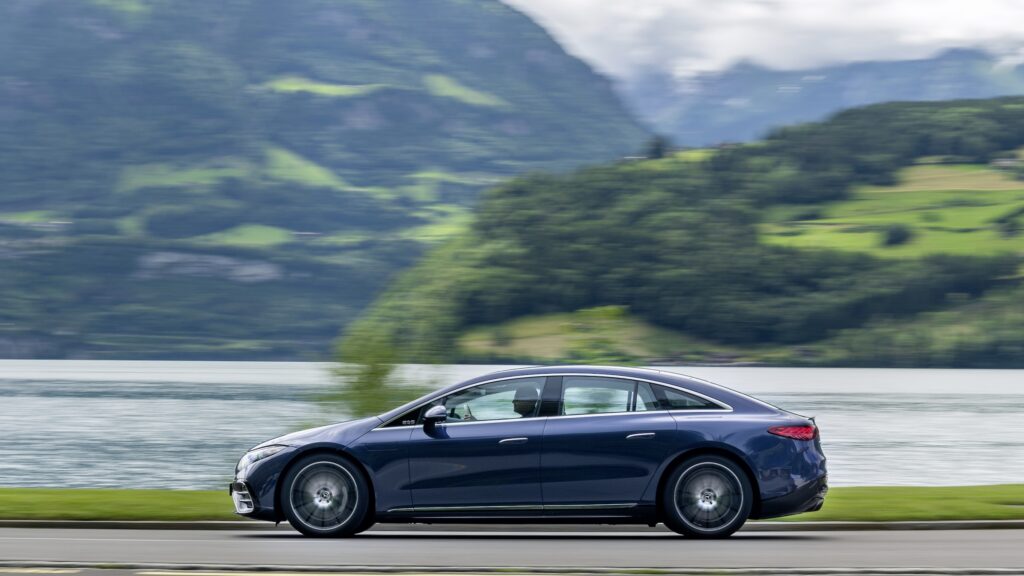
Farther time…
The 450+ is the long-distance champion of the EQS line-up so far. It’s the one capable of 780km on a full charge, measured to the reasonably realistic WLTP test standard. No co-incidence that it’s also the one that sets a new world production-car record for aerodynamics, with a Cd (co-efficient of drag) number of just 0.20.
It was always the aim for the EQS to hit that 780km range target, according to lead development engineer Holger Enzmann. It was set when work on the project began five years ago.
It was obvious from that achieving the number would be impossible without an ultra-aero shape. Enzmann says Mercedes-Benz top managment couldn’t believe the early exterior design proposals for the EQS were serious. Design chief Gorden Wagener and his people eventually devised a look the execs could live with.
So the EQS is slippery, sure, but not exactly lovely. Without an ICE under its bonnet, the nose is low and grilleless, both of which are good for aero. The tail is tall, which is good for aero and luggage space, too.
But the tapering side-on profile does reduce rear-seat headroom compared to an S-Class. The seat is also low to the floor. But this is the one area inside the EQS where it’s not better than the S-Class.
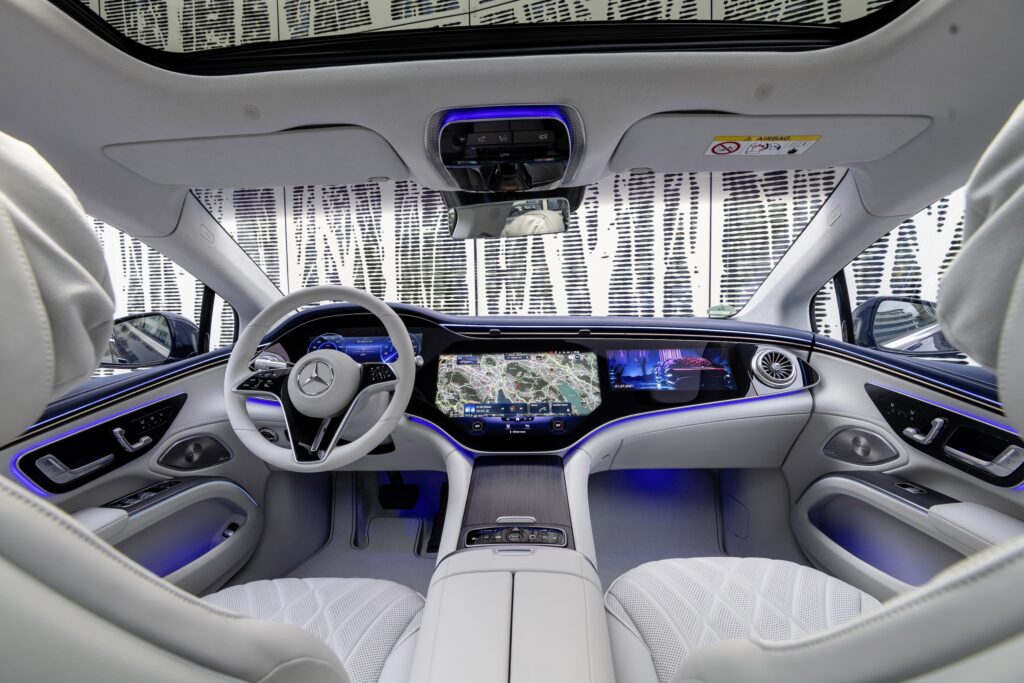
Cabin fever
Wow-factor and sheer design classiness make the cabin of the EQS the best from Mercedes-Benz in years, at least when there’s a Hyperscreen inside (it’s an option in Europe, but sure to be standard in top-grade versions in Australia).
This massive sheet of gently curved glass that’s home to up to three displays packs a real visual impact. It’s also quite intuitive to use (read more about Hyperscreen here).
It’s surrounded by acres of artfully curvy craftsmanship in properly premium materials. There are few physical buttons, so the overall look is clean and uncluttered.
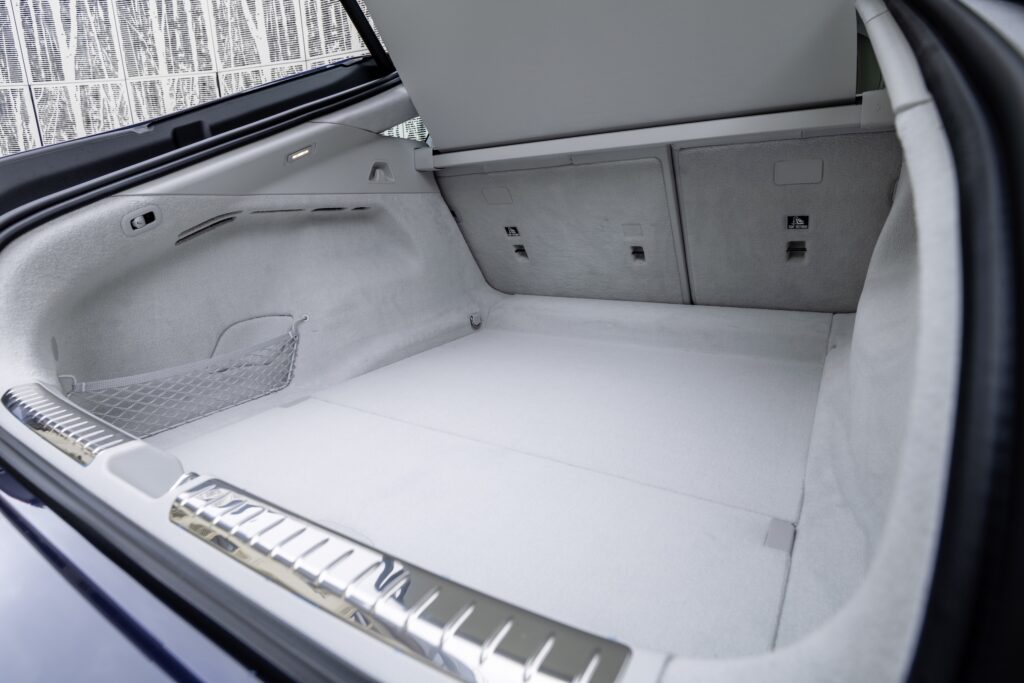
Down below
The single motor of the 450+ is an innovative new design, more advanced than those in earlier EVs from Mercedes-EQ.
It’s a permanent magnet synchronous machine, which isn’t unusual. But where most EV motors have stators with three phases, the motor in the rear axle of all EQS models has six.
The effect of this is comparable to doubling the number of cylinders in an ICE, explains engineer Xenia Kressman. Both power and smoothness are increased.
The stator windings are slightly skewed relative to the rotor, she adds. This further enhances smoothness, and reduces noise.
The motor is cooled by liquid circulating though the rotor shaft and around the stator casing. The waste heat captured by the coolant can be used elsewhere, so cutting the need for range-sapping electrical heating.
The 16,000rpm motor is also double isolated from the EQS’s body with big rubber bushings. The same goes for the three-phase motor installed in the front axle of all-wheel drive variants.
Kressman also points to other noise and vibration countermeasures, including the three-layer laminated acoustic cover for the rear motor’s inverter.
So the EQS450+ should, in theory, impress with its performance, efficiency and refinement…
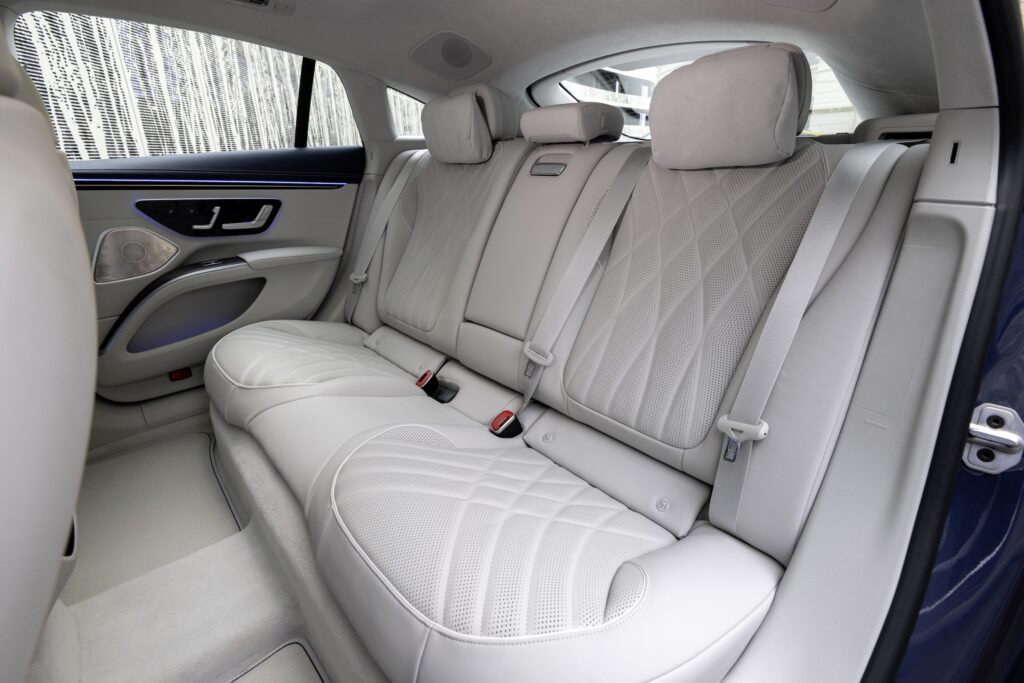
Pace and quiet
Maximum outputs of the 450+ motor are 245kW and 568Nm, but the the massive battery pack means its kerb weight is almost 2.5 tonnes. The claimed 0-100km/h time is 6.2 seconds.
While the EQS lacks the off-the-line urgency of dual-motor EV with all-wheel drive, it’s decently quick once rolling. And it feels responsive and eager, as an EV should. Top speed is limited to 210km/h.
The silence and smoothness of the 450+ verge on the supernatural. It’s hard to judge speed in this Mercedes-EQ, simply because of the near absence of sensory cues.
Wind noise, as you’d expect, is very low. But this isn’t the only clue to the EQS’s aero prowess.
Wheel-mounted paddles allow the driver to tap through the car’s three basic levels of regenerative braking. Select no regen, release the accelerator on a flat stretch, and the EQS rolls, and rolls, and rolls some more.
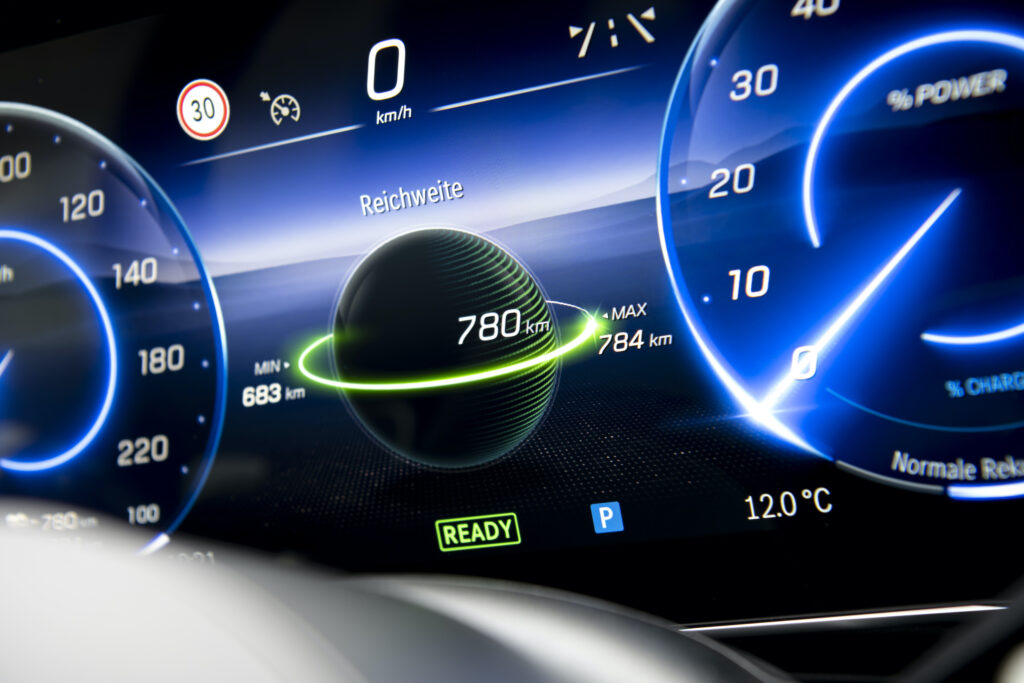
Low energy
Driving the EQS450+ for almost three hours, covering 180km, the car’s trip computer calculated my consumption at 12.6kWh/100km. This is a number well below its WLTP energy use rating of 15.8 to 19.8kWh/100km.
The Swiss Alps are part of the reason for the result; the drive started high and finished low, so regenerative braking worked its wonders. On the other hand my driving style was normal, including quick overtakes when necessary.
Rear-wheel traction restricts maximum regeneration power to 186kW, compared to the 290kW of the dual-motor EQS580.
It’s safe to assume that the energy efficiency of the EQS450+ will be reasonably impressive. And this, in turn, means it’s likely to be able to drive its WLTP-rated range, or close to.
Hey, charger!
Connected to a powerful DC fast charger, the EQS450+ can add 300km of range in only 15 minutes. It can take up to 200kW, via the DC pins of the CCS port that will be standard for the Australian market.
The standard on-board AC charger is 11kW. Relying on this means a full recharge will take around 10 hours. In Europe a larger 22kW AC charger, which halves the time for a wallbox recharge to five hours, is an option.
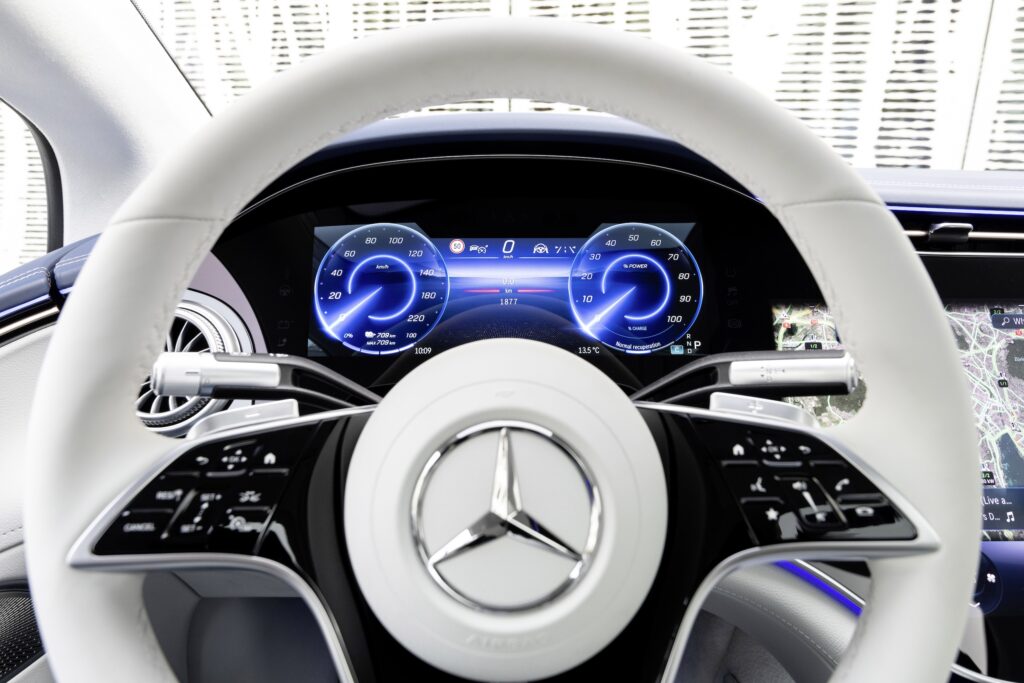
Handling it…
The EQS shares chassis components like suspension and steering with the latest S-Class, and there are similarities in the way they both drive. The wheelbase of the EV is very close to the long-wheelbase variant of the ICE-powered luxury sedan.
Rear-wheel steering is standard in the EQS and the S-Class, and it does a good job of making them both feel like shorter cars when manoeuvering and cornering. Light but precise steering makes the wide EV easy to guide with accuracy.
While variable air-spring suspension is another thing the cars have in common, the handling flavour of the EQS is slightly different from the S-Class. The EV doesn’t have the super-soft pillowy feel of the ICE car in default Comfort driving mode.
Despite its greater weight, the EQS feels a little more agile and eager when cornering. While no sports car, it is a fine drive.
Safety measures
As an electric S-Class equivalent, the EQS naturally features all of Mercedes-Benz’s latest, most advanced driver-assistance and safety technologies. Beginning with auto emergency braking, the list goes on and on. The passive safety equipment is also among the advanced available.
And Mercedes-Benz has also paid close attention to the electrical safety features of the EQS. Its battery pack monitoring system, for example, is designed to give occupants five minutes to get out of the car when it detects the possibility of a thermal-runaway fire.
Engineers also say the car was subjected during development to 13 side-impact crashes to test the integrity of the battery pack, compared to the two required by law.
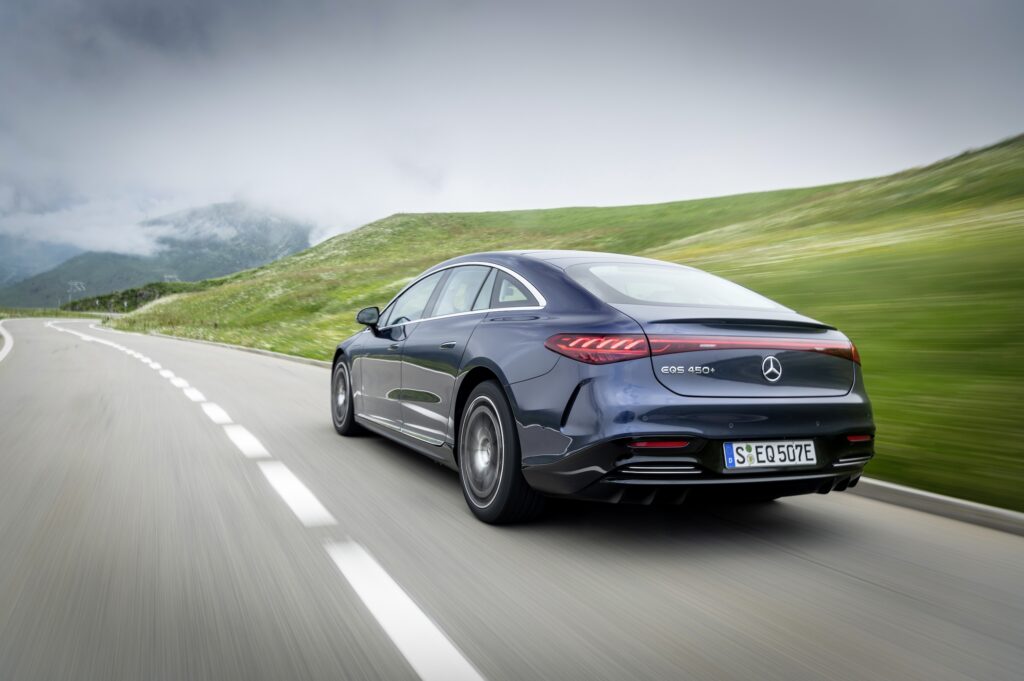
Cooler than ICE
The EQS isn’t only a more appealing luxury car than the S-Class in a bunch of ways. It’s also a pointer to what Mercedes-Benz is capable of delivering when it designs and develops a purpose-designed EV.
As the world’s oldest car maker prepares to end its long ICE age, the EQS shows it can produce an advanced, efficient and engaging EV. Expectations of the smaller and more affordable EVs to come will be very high.
Mercedes-EQ EQS450+ specifications
Price: $260,000 (estimated)
Basics: EV, 5 seats, 4 doors, large liftback sedan, RWD
Range: 780km (WLTP)
Battery capacity: 108kWh
Battery warranty: 10 years/250,000km (guarantee of 70 percent of original battery capacity)
Energy consumption: 15.8 to 19.8kWh/100km (WLTP)
Motors: 1 rear, 245kW/568Nm
AC charging: 11kW, Type 2
DC charging: 200kW, CCS
0-100km/h: 6.2 seconds (claimed)

